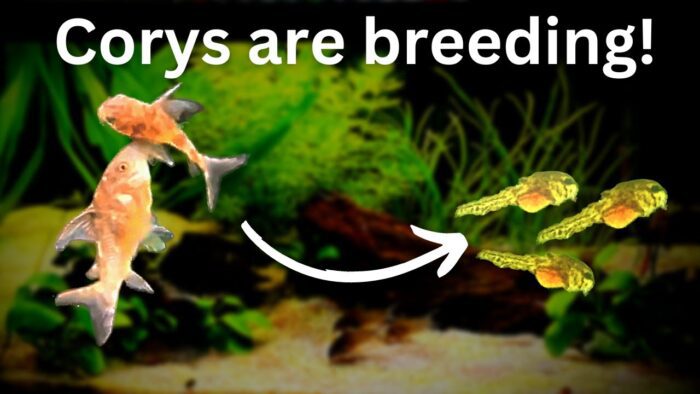Corydoras, also known as cory catfish or armored catfish, are a popular freshwater fish kept by aquarium hobbyists. With their armored bodies and energetic grouping behavior, corydoras make excellent additions to community tanks. Many aquarists also enjoy breeding corydoras and raising the fry.
Corydoras are egg scatterers that do not guard their eggs. While breeding corydoras is not difficult, providing good conditions to maximize egg fertility and fry survival does take some planning and effort. This article provides tips on how to successfully breed corydoras catfish in your home aquarium.
Table of Contents
Setting Up the Breeding Tank
It’s best to set up a separate breeding tank for your corydoras rather than breeding them in a community tank. A 10-20 gallon aquarium with fine gravel substrate works well. Add hiding spots like clay pots, driftwood, and aquatic plants. Java moss is a great plant for corydoras to deposit eggs in.
Water parameters are important for triggering spawning and egg health. Maintain a water temperature around 75-79° F. Corydoras prefer soft, acidic water with a pH between 6.0-7.0. Use peat filters, Indian almond leaves, or specialty corydoras water conditioners to naturally soften and acidify the water. Perform regular partial water changes as well. Good water quality translates to higher fertility rates.
Choosing a Breeding Group
Select a group of 4-6 healthy corydoras for your breeding tank. Try to pick corydoras that are approximately the same size and age. Having both males and females is vital, but sexing corydoras is challenging. Generally, females are wider-bodied when viewed from above while males are more streamlined.
Make sure the species you select is egg scatterers rather than mouth brooders. Some popular egg scattering cory species are:
– Bronze Corydoras
– Panda Corydoras
– Peppered Corydoras
– Sterbai Corydoras
– Julii Corydoras
Feeding for Spawning
Proper feeding is key to getting corydoras in breeding condition. Feed a high quality sinking pellet, frozen foods like bloodworms, or blanched vegetables. Frozen cyclops containing omega-3 fatty acids may stimulate breeding behavior. Feed several small meals per day and provide plenty of food so the fish can eat to satiation. Well-fed corydoras are more likely to spawn.
Inducing Spawning Behavior
Once your group of corydoras seem plump and content in the breeding tank, try triggering spawning with cool water changes. Drop the temperature to around 70° F and perform 50% water changes for several days, while continuing to generously feed the fish. The shift in temperature combined with lots of food signals it’s time to mate.
You may notice the male chasing the female, leaning against her side, or the female swimming in circles with the male following. The females will start scattering adhesive eggs all around the tank when spawning begins, especially on leaves and other surfaces. A single female can produce over 100 eggs! Leave the lights on so the parents do not eat the eggs.
Caring for Corydoras Eggs and Fry
Corydoras eggs will hatch in about 5-10 days. Remove the parents once spawning finishes so they don’t eat the eggs. However, leave the eggs in the breeding tank – do not attempt to move them. The eggs have an adhesive coating that helps them stick.
Newly hatched corydoras fry can be sensitive and difficult to raise. Maintain excellent water quality with frequent testing and small daily water changes. The fry eat infusoria and microscopic organisms at first. Once large enough, feed them powdered fry foods or finely crushed flakes 4-5 times daily. Growth is rapid if given proper care. In about 8-12 weeks the juvenile corydoras will resemble small adults and can be moved to community tanks or sold to pet stores.
Conclusion
Breeding corydoras catfish is a fun and rewarding aquarium experience. By setting up an appropriate breeding tank, managing water parameters, feeding generously, and paying close attention to spawning and fry development, you can have success raising a new generation of these beloved armored catfish. I sincerely hope you find this “Corydoras Catfish Breeding- Tips for Breeding in Your Tank” article helpful.

Lena Whitmore is the lead writer at FishClans.com, bringing over 10 years of fishkeeping expertise and a master’s degree in Marine Biology to the site. Her extensive knowledge and practical tips have established her as a respected authority in the aquarist community. Lena’s work has appeared in leading publications and she frequently speaks at industry events.
Connect with Lena and FishClans on Facebook, Pinterest, and Instagram.

